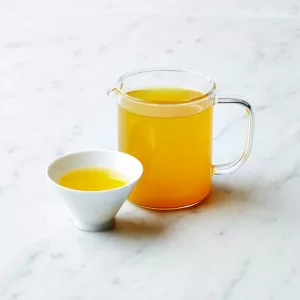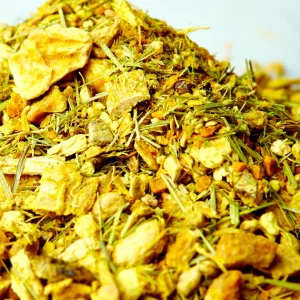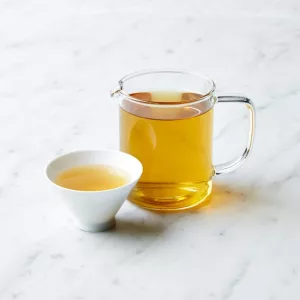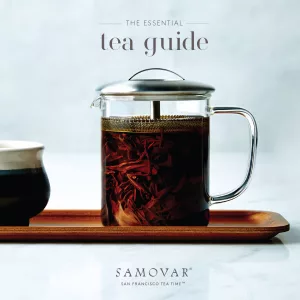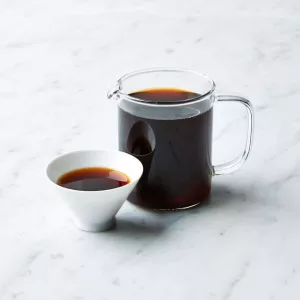It seems that as life has gotten faster and faster, we humans have managed pretty well to keep up with the speed. But I I believe Gandhi: “That there is more to life than increasing its speed.” In fact, I’d suffice to say that things get better by decreasing their speed. Slow is good.
Rituals slow us down and connect us to this moment here and now.Enter rituals. Rituals slow us down and connect us to this moment here and now. I’m not talking about big, ornate cultural or religious rituals. Instead I’m referring to simple actions that connect us to ourselves, our place, and the present moment.
These kind of rituals allow us to both forget ourselves and our worries, and to escape into the present moment. They allow us to enter flow – the state of being where we’re actually not thinking, not aware of any single thing other than the act of what we are doing.
Rituals slow us down, and get us present, both of which make life better. Why? For one life is about enjoying the experiences it offers us, right? So why rush through it all? Why blow right through the transitory experiences we’ve got?! Savor, inhale, embrace the smallest nuance that we have, because we really don’t have much else! Things happen. There are no guarantees we’ll even have the next moment. So why not make the most of the one we’ve got?
Being present is good stuff. Because if we’re present we can do more of the experiencing I mentioned above, and, also we can be more effective. If we know what we are doing, then we can choose to do what we want. If we don’t know, then we can’t choose! When we’re not present-minded (which is most of the time!) then we’re autopilot, just going with impulses in our usual, habitual, and often uproductive ways. Unconsciously. Going through life unconsciously means we’re not making choices. Compulsions toss us around like the wind. If get present just a smidgeon – then suddenly choices blossom and we have options. Options are like freedom. No options is like no freedom. Who wants no freedom?
Rituals are great training grounds for achieving presence.
What are rituals? As author Tony Schwartz wrote that rituals are “…routines we give importance to.” I’d take it a bit further in saying that rituals are also ideally simple, repeatable, and allow us to get lost in their acts. Anything can be a ritual. Brushing your teeth. Taking a shower. Getting up out of bed. Chopping garlic. Making tea. The trick is to choose an important routine and to systematize it so that you do it the same way every single time – so it doesn’t require thought. Creating new rituals is like creating a new habit. And because that can be challenging so I’d suggest starting small and simple so that success is guaranteed. My friend Leo has a great course on how to create healthy new habits.
Watched water does boil. Watching water boil is awesome.
I love using tea as a ritual because it covers so many bases. Here’s my regular tea ritual that I use to start my day:
1. Boil water in my electric kettle. Watched water does boil. Watching water boil is awesome. It’s science and magic together. Witnessing the application of heat to still water, and then the transition of water to steam really is magic, and a great first step. I witness the water for the 2 minutes it takes to boil. “Crab eye” bubbles form and the kettle begins to steam. Those tiny bubbles dance and bounce and merge to form larger, hotter bubbles. Finally steam blasts out of the kettle as the water turns to “old man water,” i.e. a truly roiling boil. And then “ding” the bell goes off on the kettle, and it shuts off automatically. Witnessing this is awesome, and sets the stage for making great tea.
2. Add tea to guywan. I like storing my tea in a nice container because, well, it’s nice. Like wine from a decanter, there’s something special about having special (not expensive) containers. I use my fingers because I like to touch the raw whole leaves, feeling their size, shape, texture. Also I find that I get better portion control with touch. I grasp about 1-2 tablespoons of tea with my fingers and drop it into the guywan. Guywans are great because they are both traditional and beautiful, and function so efficiently. They concentrate the taste and the aroma into a real sensory journey. I’m a fan of using a lot of tea and a little bit of water. Using more tea I get more aroma, more taste, more caffeine, and more health benefits. And, I also get more infusions. Using 1-2 tablespoons to 6-8 ounces of water I often get 20-30 cups of tea. A lot. The one trick with doing it this way is to use really, really short brew times. Like 15-20 seconds!
Is it earthy like peat moss or pine needles or barn yard? Or floral like lilacs? Fruity like lychee or papaya? Or vegetal like raw spinach or steamed asparagus?3. Add hot water to leaves and infuse for 15-20 seconds.
4. Decant the tea into another cup. Witness the nectar pouring from the guywan to the teacup. The rich color. The aroma rising up to fill my nostrils. It’s intense and really awakening. Sip.
5. Notice. Discern. What aromas rise up in the steam? What does the body of the brew feel like in my mouth, dry, thin, chewy, full? What taste persists? Aftertaste? Is it earthy like peat moss or pine needles or barn yard? Or floral like lilacs? Fruity like lychee or papaya? Or vegetal like raw spinach or steamed asparagus? Or sweet and thick and dark like barley malt? Any good tea will have a variety of these elements: aroma, taste, aftertaste, and body. Any good tea will take you on a gustatory, sensual journey. Seriously. Good tea ignites the senses and allows the drinker to entirely engage into a fully present moment with the leaves.
That’s my tea ritual. Please copy it, improve on it. And remember that once you make it a habit, it’s easy and invaluable. It slows you down, starts you up, connects you to the moment, and gets you out of the moment. All with just some water and leaves.

